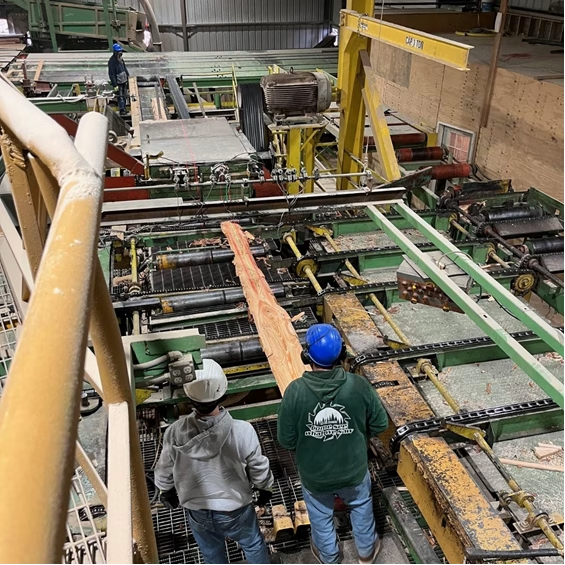Meeting America’s Forestry Workforce Needs

Why the Jobs in the Woods Act Matters Now
The August 2025 jobs report showed signs of slowing: only 22,000 jobs were added, and unemployment ticked up to 4.3%. For forestry, these numbers underscore the importance of strengthening rural workforce opportunities. When the housing market rebounds, demand for timber products will rise — and our industry must be ready with a skilled workforce to meet it.
Each new home requires more than 13,000 board feet of lumber. That demand powers mill operations, log transportation, and wood products manufacturing. But while markets fluctuate, one factor remains constant: the need for skilled people. Workforce shortages are now one of the greatest risks to the long-term stability of the timber supply chain.
The Workforce Challenge
The forestry sector is experiencing an aging workforce and difficulties attracting younger generations. In northeast Oregon, the average age of logging contractors exceeds 57 (similar for all regions across the US), and the industry has shrunk by 35% in the past 15 years. Nationally, one-third of logging business owners plan to leave the business within five years. At the same time, employers report ongoing challenges in filling roles such as equipment operators, reforestation crews, millwrights, electricians, and commercial vehicle drivers requiring a commercial driver’s license (CDL).
Without new workers entering the field, the risks grow: wildfire vulnerability, loss of timber supply chain stability and infrastructure, and missed economic opportunities in rural communities.

What the Jobs in the Woods Act Would Do
The Jobs in the Woods Act (S. 1336, H.R. 4575) directly addresses these workforce challenges. This bipartisan, bicameral bill — introduced by Senators King (I-ME) and Risch (R-ID) and Representatives Gluesenkamp Perez (D-WA-03) and Rouzer (R-NC-07) — authorizes the Secretary of Agriculture to establish a competitive grant program targeting forestry workforce development.
Here’s what it would mean in practice:
- Targeted investment in rural areas: Eligible areas are low-income, non-metropolitan regions with populations of 20,000 or fewer and reliable broadband access.
- Competitive grants: Nonprofits, states, tribes, local governments, and educational institutions can apply for up to $2 million over four years. Grants must show clear need, sustainability, and partnerships with schools or colleges.
- Annual funding: The bill authorizes $10 million annually from FY2025–2029.
- Program priorities: Applications addressing workforce aging, youth migration, and job placement will receive priority.
By creating clear career pathways, expanding apprenticeships, and partnering with proven initiatives and programs across the country, this legislation ensures young people in rural communities can access family-wage jobs close to home.
Why It Matters
The Jobs in the Woods Act aims to build a skilled forestry workforce for long-term sustainability—not just fill vacancies. A strong, skilled workforce:
- Keeps the timber supply chain reliable and competitive.
- Ensures reforestation, wildfire recovery, and forest management continue uninterrupted.
- Sustains rural economies by offering family-wage careers.
With support from more than 70 forestry associations nationwide, this legislation represents a unified call for action.
Take Action
FRA is urging Congress to cosponsor the Jobs in the Woods Act. This October, FRA members will take that message to Capitol Hill during our Fall Fly-In, October 7–9.
We encourage all members to join us in Washington, DC, to advocate for this important bill and other policies critical to forestry’s future. If you cannot attend, you can still make your voice heard — FRA has created an Action Alert helping you reach out to your Senators and Representatives and urge them to support this legislation.

